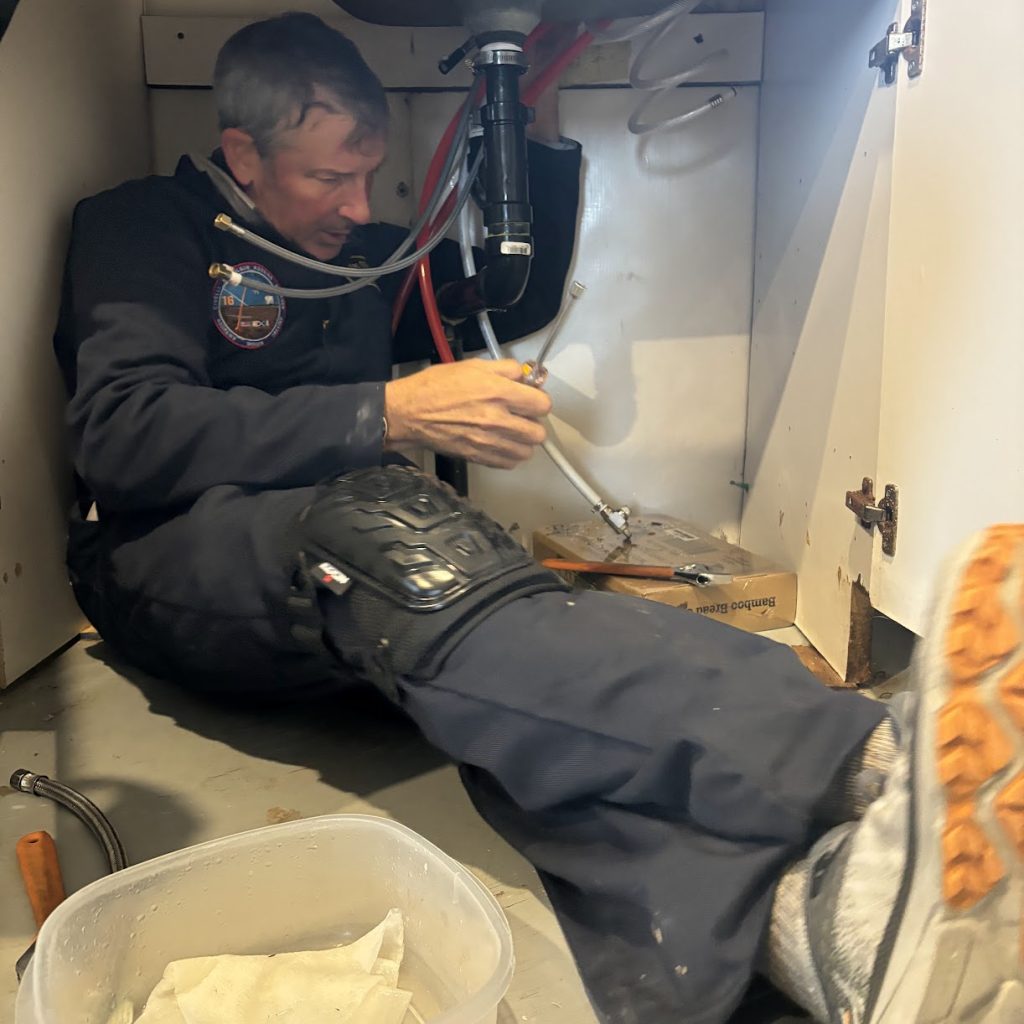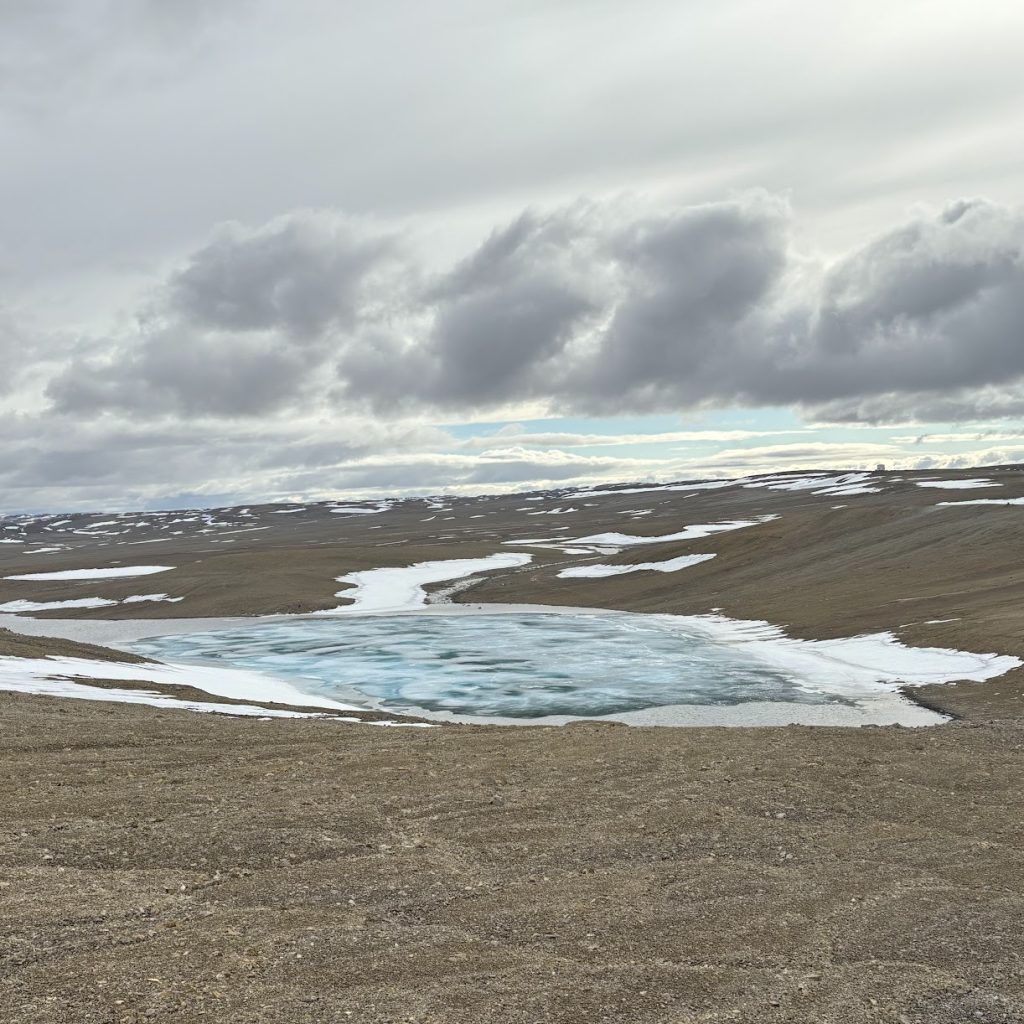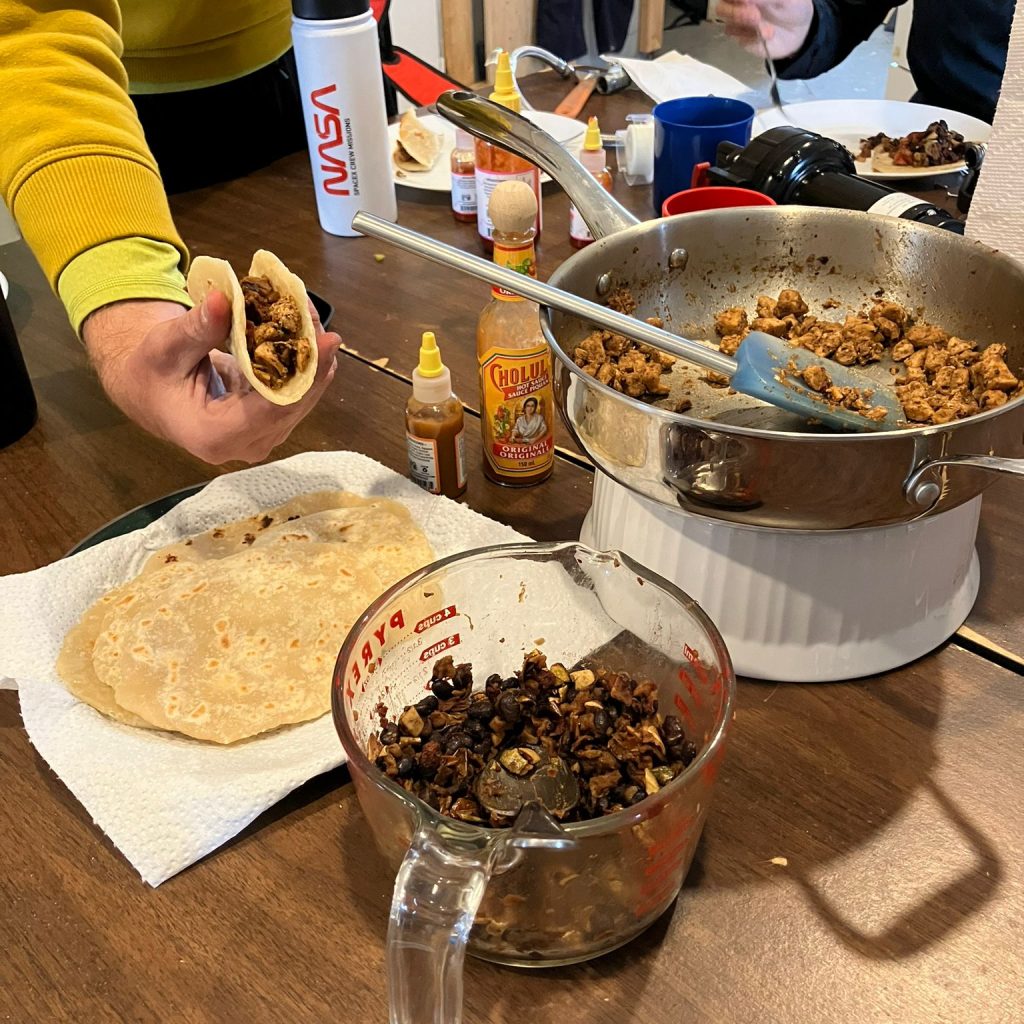Flashline-16 Daily Report 05-07-2024
Author: Michael Andrews – Crew Logistics
The team woke up initially ready to explore the center of Haughton crater, something that hasn’t been achieved by this base in several years. However, this was our worst weather to date, with constant rain of varying intensity at near-freezing temperatures. The Arctic Wolves had no choice but to postpone today’s crater plans.
One important thing that Health and Safety Officer Swarmer and I brainstormed during breakfast was standard operating procedures (SOP) for the research station. Our team has an existing repository of checklists and guides to reference for main activities, but they could be built upon further. Throughout the rest of the mission, we will assign SOPs to team members to populate. In my professional life, I’m a huge believer of well-defined and repeatable processes. A good SOP serves as a great reference, but it also allows crew members to prepare for the mission by reviewing the documentation before arriving to Devon Island. Future space colonization will require all types of people to succeed, not just engineers and veteran astronauts that can intuitively understand complex system. Turning this mission into a collection of repeatable process allows us to focus our brainpower on the more complex tasks.
On the subject of tasks, our team jumped into the following “rainy day” tasks to make the most of our situation:
- ATV Startup (Woods and Robbins): probably the most exciting accomplishment of the day, we were able to successfully restore functionality to another ATV! Our beige-colored vehicles, Alterra 300s, became a real engineering project as we experimented with air-,spark-, electrical-, and fuel-related issues. In the end, starter fluid sprayed into the air filter was the solution to get the vehicle up and running. We will work on future ATVs later in the mission, and we realized that adding fuel conditioner to each vehicle will prevent other overwintering issues for the next crew.
- Engineering and EVA Room Organization (Andrews): lack of organization is a pet peeve of mine, and today was the best opportunity to blitz the entire first floor of the base. Since last year’s crew had to leave unexpectedly early, a lot of equipment was not properly put away. Also, I noticed that the use of vertical space here could use improvement to get material off of the floor. My progress is slow and will require another full day, but I have a great grasp of all our supplies and their location. I’ll properly finish up the effort later in the week with a electronic inventory and location system.
- Food Organization (Swarmer and Nicholson): we brought a huge amount of food on this trip, and the base already had a healthy amount of food. Today we began to catalog and inventory the food so we can better plan for the nutritional gaps to bring only what is needed next year.
- Science and Expedition Reports (Nicholson): you’ll also see Nicholson’s science and expedition logs that were finalized today – expect many more in the coming days!
- Habitat Leveling Measurements (Cinelli): one concern that we have had year over year is how the base is holding up to the thermal cycling of the seasons. We are taking various measurements of the walls and floors of the base so it can be modeled in CAD by the Mission Support team. This will help us confirm if the base is structurally stable, or if we need to reinforce it on future missions.
- Mold Cleanup (Cinelli): Ilaria also noticed some mold in a corner of our EVA room during leveling measurements and sprung into action. This fortunately was not black mold, but we missed this on our initial inspection.
- Water Plumbing Work (Trevino and Robbins): our water system is in need of some temperature and pressure improvements. We removed the hot water heater to dispose of and replace on a future mission. The prevailing hypothesis regarding the water heater: keeping a valve closed at the end of FMARS-15 caused the water heater to rupture over the winter when the water inside froze. The kitchen sink’s sprayer was cracked, so we took this as an opportunity to replace the entire faucet head. Work will have to continue on our water pump, which needs to be replaced as well.
As I generate this report and we await Executive Officer Trevino’s extremely-hyped chicken fajitas for dinner, the weather is already starting to clear up. Tomorrow’s forecast – if correct – will be our warmest and sunniest yet! A best-case scenario for Saturday July 6th would be to hike the crater in the morning and enter true simulation by the end of the day, but we need to watch our schedule and align on the rules of simulation.
Another parting thought after reflecting on the situations above. The last few days have been uncharacteristically wet for a Mars analog location, but our situation can still be compared to other unforeseen circumstances that could arise on the red planet. An unexpected dust storm or solar radiation spike could condemn a Martian colony to their quarters for multiple days. To say that today’s inclement weather wasn’t a hit to morale would be a lie, so we redirected our frustration and energy into some overdue habitat actions with some meaningful results at the end of the day.







